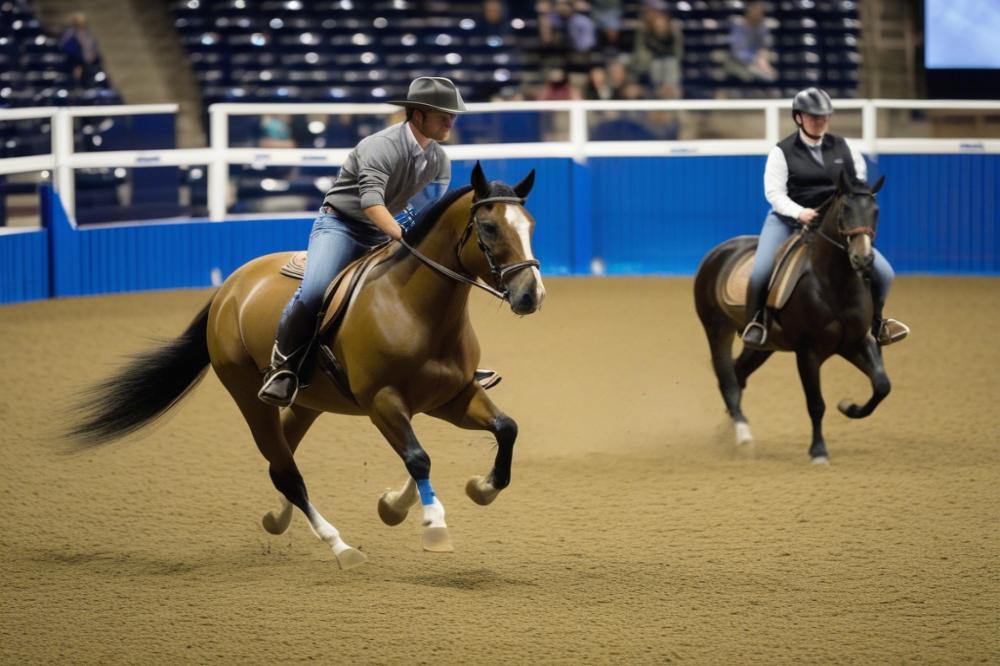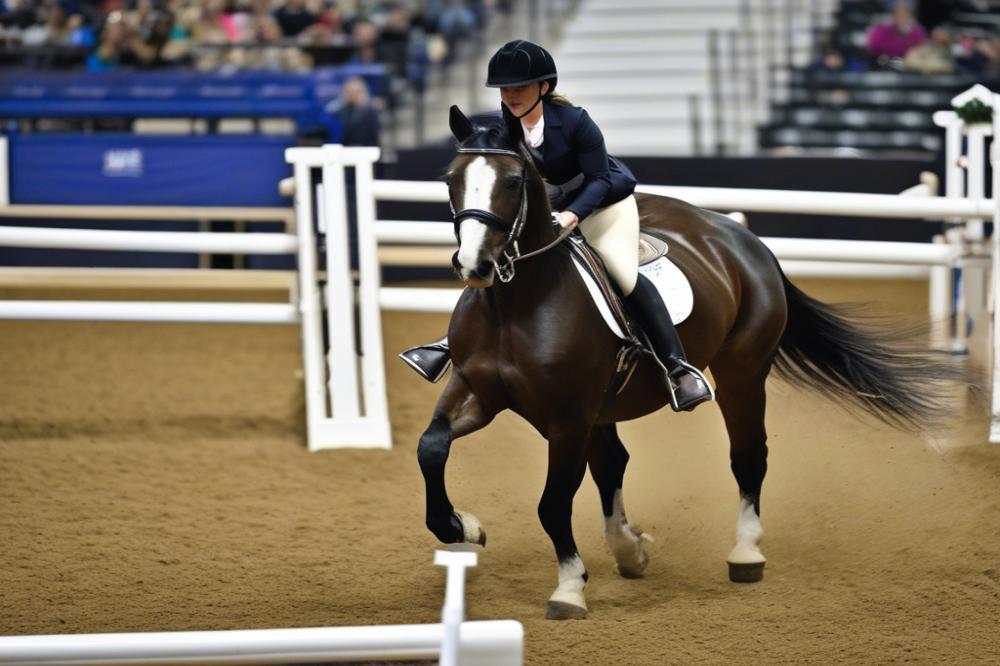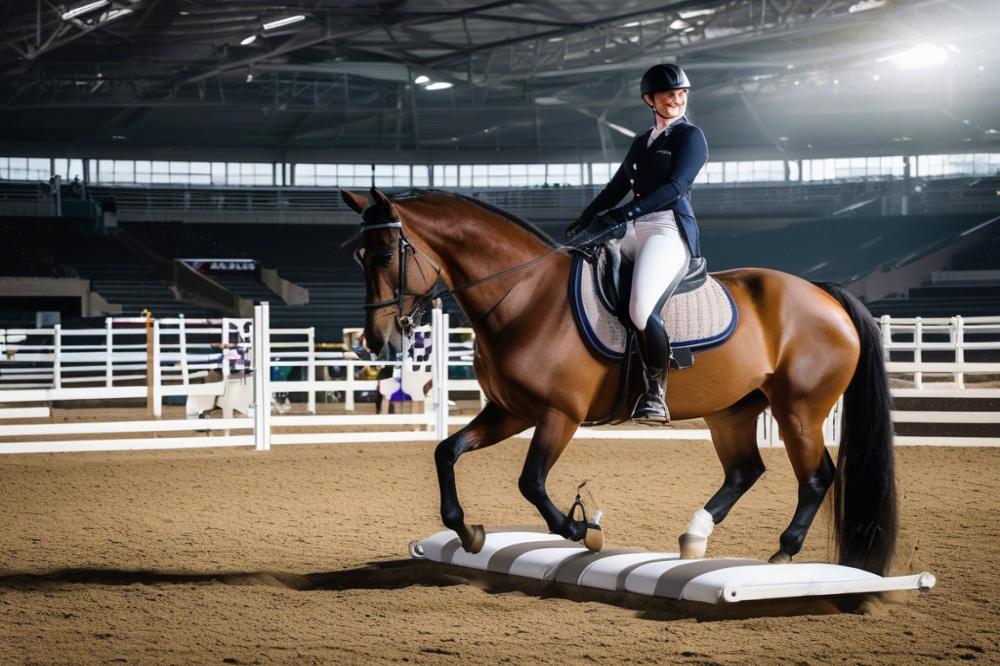Introduction
draft cross riding involves a distinctive blend of power and grace, making it an interesting pursuit for equestrians. These horses, often a mix of draft breeds and lighter breeds, possess a variety of traits that can enhance their performance in different settings. Understanding their characteristics is essential for success. Riders need to be aware of their body structure, temperament, and energy levels. Each trait influences how a horse responds to commands and handles various situations in the arena.
Learning to ride a draft cross can bring many rewarding experiences. As riders develop their skills, they can improve their confidence and control while maneuvering through tasks. arena work provides a controlled environment where challenges can be presented and overcome. In this setting, riders can explore various movements, enhancing both performance and harmony with the horse.
Proper training not only benefits the horse but also cultivates a deeper bond between rider and animal. The right techniques can foster a relationship built on trust and communication. This partnership is vital, especially with a draft cross, as their strength and size require a gentle yet firm approach. In return, the horse also becomes more responsive and intuitive to the rider’s cues.
Overall, understanding the nuances of a draft cross breeds many advantages in the arena. Taking the time to learn and adapt can lead to significant improvements in both riding and teamwork. Each session in the arena turns into an opportunity for growth, both for the rider and the horse.
Understanding draft cross riding

Draft crosses are a blend of draft horses and lighter breeds. The resulting animal tends to be strong, calm, and well-muscled. Many riders appreciate their gentle demeanor and robust build. These traits make them suitable for various disciplines, especially in arena work.
Definition of draft crossbreeds and their traits
Typically, draft horses are large and powerful, while lighter breeds offer agility and speed. When combined, the draft cross possesses the best of both worlds. Riders enjoy traits such as strength and endurance, along with a good temperament. Overall, this combination creates a well-balanced mount that is adaptable to many situations.
Common riding styles suited for draft crosses
Given their physical characteristics, various riding styles work well with draft crosses. Many riders favor Western riding, as these horses excel in tasks requiring strength and steadiness. English disciplines like dressage or jumping are also options. Their strong legs help them handle the demands of these activities. Enthusiasts often find that moving through an arena feels smooth and controlled.
Unique considerations in horse training for draft crosses
Training these horses requires a different approach compared to lighter breeds. Since they are larger, using proper equipment is vital to avoid discomfort. Riders must focus on building a solid foundation in basic commands. Patience is essential here, as draft crosses may take a bit longer to process new information. Their calm nature means they are often forgiving of mistakes during training sessions.
Furthermore, maintaining physical health should be a priority. This breed tends to be susceptible to certain health issues, particularly joint problems. Regular check-ups and appropriate exercises can help mitigate these concerns. During training, attentive handling can build trust and confidence, promoting a successful partnership.
Essential equestrian techniques

Key techniques are vital for controlling and communicating with your horse effectively. Riders must understand how their body influences the animal’s movements. A strong seat is the foundation of good riding. This means being balanced and centered in the saddle. When a rider maintains balance, the horse can respond more naturally and accurately.
How Balance Affects Performance
Balance plays a crucial role in performance levels. Maintaining a proper position allows for fluid transitions and smoother gaits. If a rider leans too far forward or backward, it can confuse the horse. This can lead to resistance or uneven strides. Therefore, riders should practice finding the sweet spot in their balance. Regular exercises can strengthen core muscles and improve stability.
Applying Proper Aids and Cues
Using the right aids is essential for effective communication. Hands, legs, and body weight all work together to guide the horse. Subtle cues often lead to better responses from the mount. For example, a gentle squeeze of the leg can signal the horse to move forward. Likewise, a slight shift of weight can indicate a turn or change in direction. Timing is everything. Riders should be consistent in their signals to avoid confusion.
Riding Tips for Arena Exercises

Working in an arena with a draft cross can be a rewarding experience. Understanding the horse’s temperament is key. They often have a calm demeanor, but can still possess significant power and enthusiasm. Start your sessions with groundwork to build trust and connection. This lays the groundwork for successful riding.
Best practices for conducting arena exercises with draft crosses
Clear communication is vital. Use soft cues to guide your horse’s body movements. Maintain a consistent position in the saddle. This promotes stability and comfort for both rider and horse. Focus on transitions, as they are essential for developing responsiveness. Keep exercises simple, especially at the start. Gradually increase complexity as both you and your horse become more comfortable.
Incorporating exercises to improve performance
Variety is important in training. Incorporate circles, serpentines, and changes of direction. These exercises will help improve flexibility and balance. Hill work, if possible, can also build strength. Use poles on the ground to encourage careful footwork and engagement from your horse. Adjust the spacing as needed based on your horse’s stride length. Always be prepared to change things up to maintain interest.
Tips for maintaining focus and engagement during training
Keep sessions short but effective. Horses have limited attention spans, so aim for 20 to 30 minutes of focused work. Utilize positive reinforcement to reward good behavior and effort. Remember to be patient; training takes time. Incorporate fun activities like simple games to keep your horse engaged. Lastly, observe your horse’s body language. Watch for signs of boredom, and adjust your approach accordingly.
Effective Horse Communication
Understanding Horse Behavior and Responses in the Arena
Knowing how horses think is crucial for effective riding. Draft crosses can display behaviors influenced by both their draft and lighter parentage. Observing their body language is key. Ears pointed forward may signal curiosity, while pinned ears often indicate discomfort or irritation. Recognizing these signals helps riders respond appropriately. Horses communicate their feelings through movement as well. A horse that swishes its tail might be annoyed. In contrast, relaxed movements suggest comfort and willingness to work. Riders who understand these nuances can create a better environment in the arena. Always stay alert to these signs during training sessions.
Techniques to Enhance Communication with Draft Crossbred Horses
Improving communication takes practice and patience. Using clear, consistent cues is essential. Draft crosses respond well to leg pressure and voice commands. Establishing a rhythm with your aids builds responsiveness. Small rewards, like pats or verbal praise, can reinforce good behavior. Simplifying your signals can also help. Overly complicated instructions may confuse them. Remember to maintain a calm presence, as horses often mirror their rider’s emotions. Clear energy and focused intent can significantly change your interactions.
Building Trust and Rapport for Better Performance
Trust is the cornerstone of any effective relationship with your horse. Spending time grooming outside of riding can enhance your bond. Horses thrive on routine; creating a consistent schedule helps them feel secure. Incorporate gentle handling techniques to foster comfort. Encourage exploration during exercises to help them gain confidence. Gradually increase the complexity of tasks to build their skills. Patience goes a long way when developing this trust. Celebrating small achievements encourages progress and builds confidence in the horse. When horses feel secure, they are more willing to perform and engage during training.
Draft Horse Care and Preparation
Caring for draft horses before riding is crucial for their health and performance. These large animals require special attention. Proper care can make a significant difference in their rideability and attitude in the arena.
Importance of Proper Care for Draft Horses Before Riding
First, good grooming cannot be overlooked. A clean coat not only looks great but also helps prevent skin issues. Regular brushing removes dirt and debris, promoting healthy skin. It also provides an excellent opportunity to check for any injuries or abnormalities.
A strong bond between horse and rider develops through daily interaction. Spending time together builds trust and increases responsiveness. This connection is essential for effective communication during rides.
Nutrition and Fitness Considerations for Draft Cross Performance
Nutritional needs vary significantly for draft horses. Their size means they require more calories than lighter breeds. Quality hay and grains are vital for meeting their energy demands. Supplements might also be necessary, depending on specific needs.
Fitness is equally important for performance. Regular work helps maintain strength and endurance. Activities such as lunging or long lining can improve muscle tone and cardiovascular health, preparing the horse for arena work. A consistent routine promotes balance and coordination.
Pre-Ride Checks and Warming Up Exercises
Before mounting, a few routine checks can save trouble later. Inspect the tack to ensure everything fits correctly. Look for signs of wear and tear on saddles and bridles. Also, checking the horse’s legs for swelling or heat is essential.
Warming up is key in preventing injuries. Simple stretches can enhance flexibility. Walking the horse in hand helps increase blood flow to the muscles. Gradually introducing trot and canter movements prepares the horse for more intense activities.
Each step in preparation plays an important role in overall performance. Taking the time to care for and prepare a draft horse sets the stage for a successful ride. With proper attention, riders can enjoy a safe and rewarding experience in the arena.
Final Thoughts on Riding a Draft Cross in Arena Work
Riding a draft cross in the arena can be both rewarding and enjoyable. Several key practices stand out when working with these incredible animals. Start by building trust between horse and rider. A solid bond makes every session smoother. Next, pay close attention to the horse’s pace and movements. Draft crosses are often strong and powerful, which can feel different compared to lighter breeds.
Focus on clear communication using appropriate cues. This fosters understanding and response from your mount. Riding exercises should be varied to keep things interesting. Incorporate turns, stops, and other maneuvers. Each session offers a chance to refine techniques that enhance both horse and rider skills. Practicing safe equestrian techniques is also vital. Always wear protective gear and prioritize safety for both the rider and the horse.
Beyond training, the pleasure of working with draft crosses shines through. Their calm demeanor and gentle nature often create a wonderful atmosphere. Many riders find joy in the simple connection shared during lessons. With patience and practice, both horse and rider can achieve great things. Embrace the journey of horse training and enjoy every moment.



